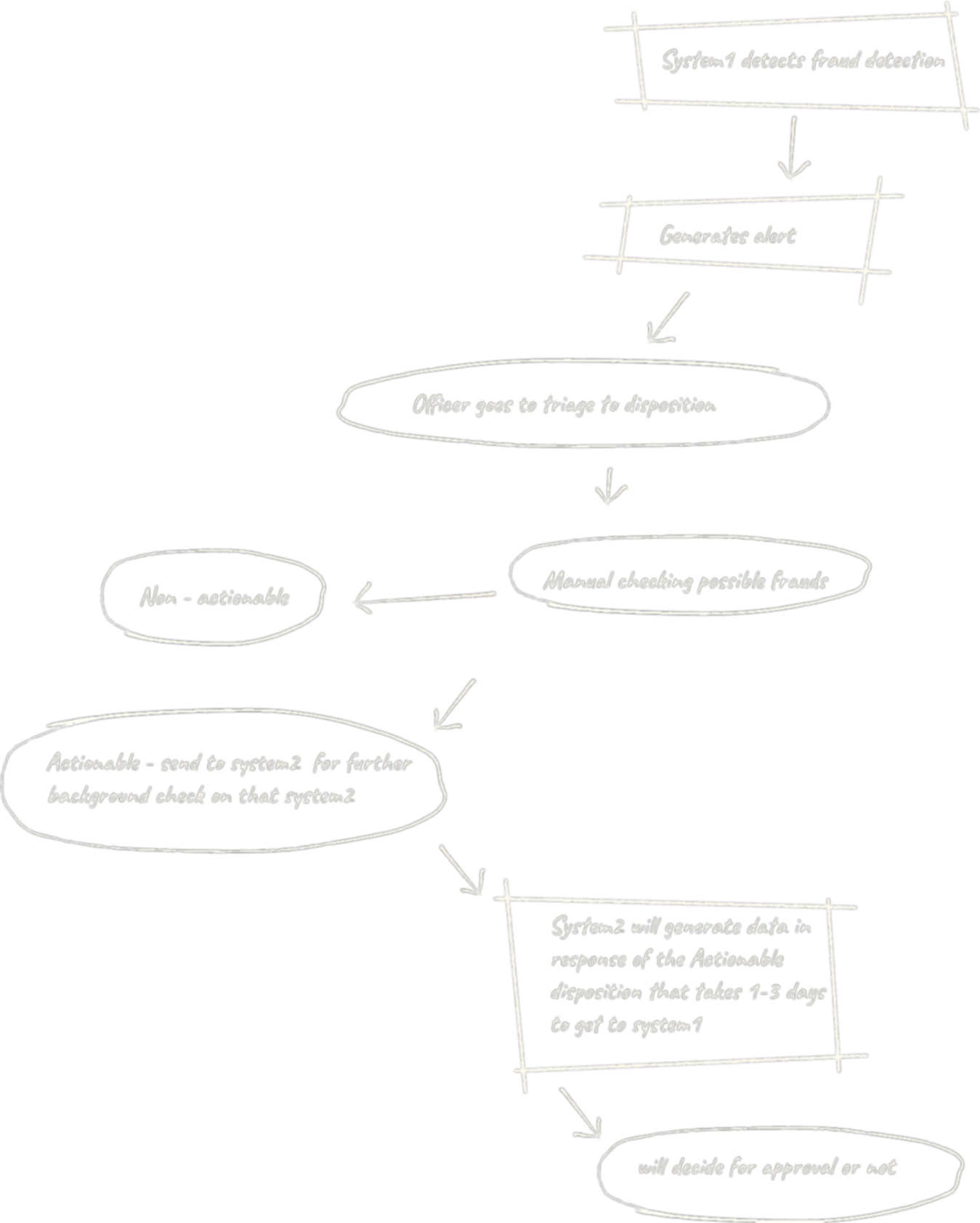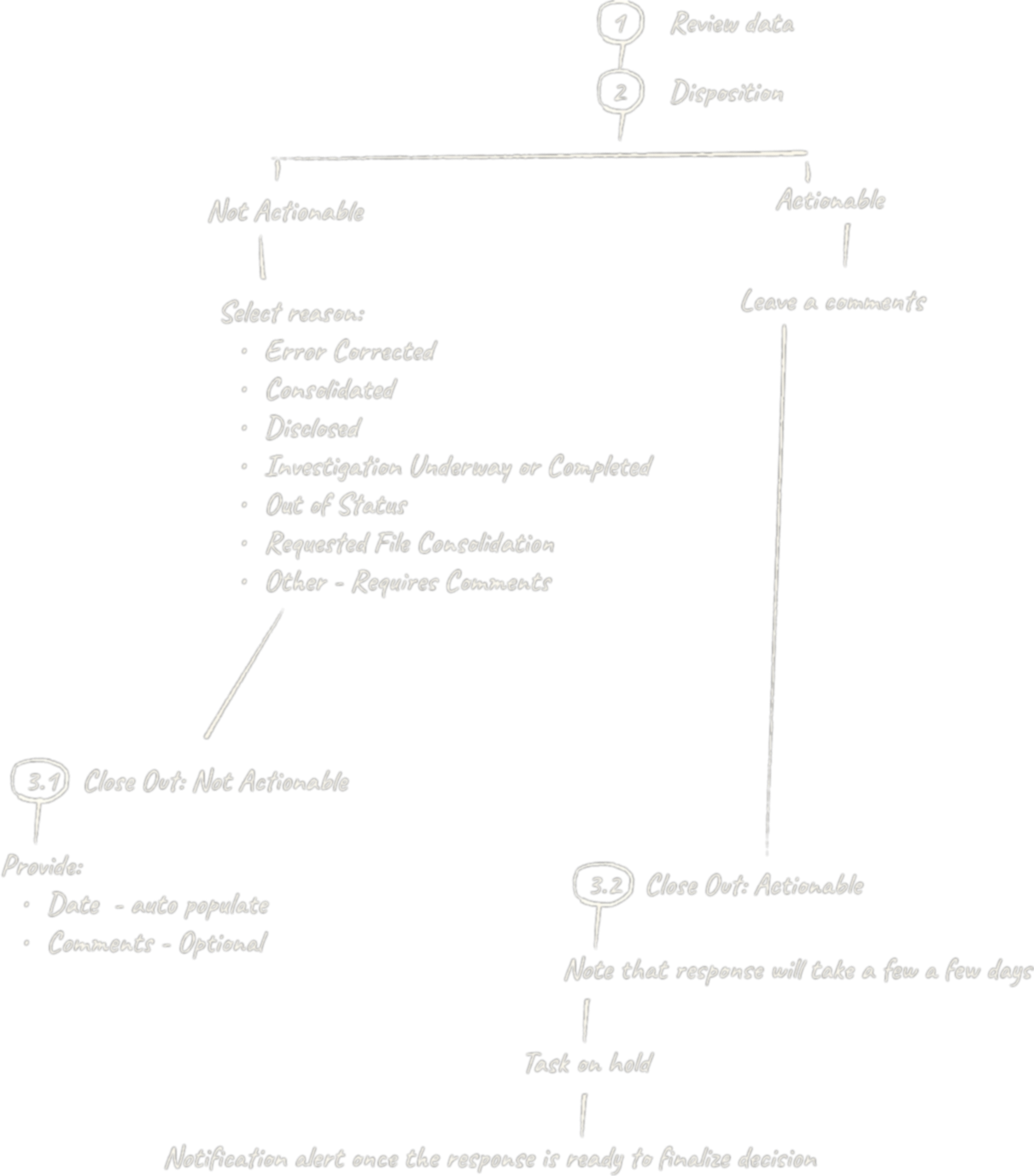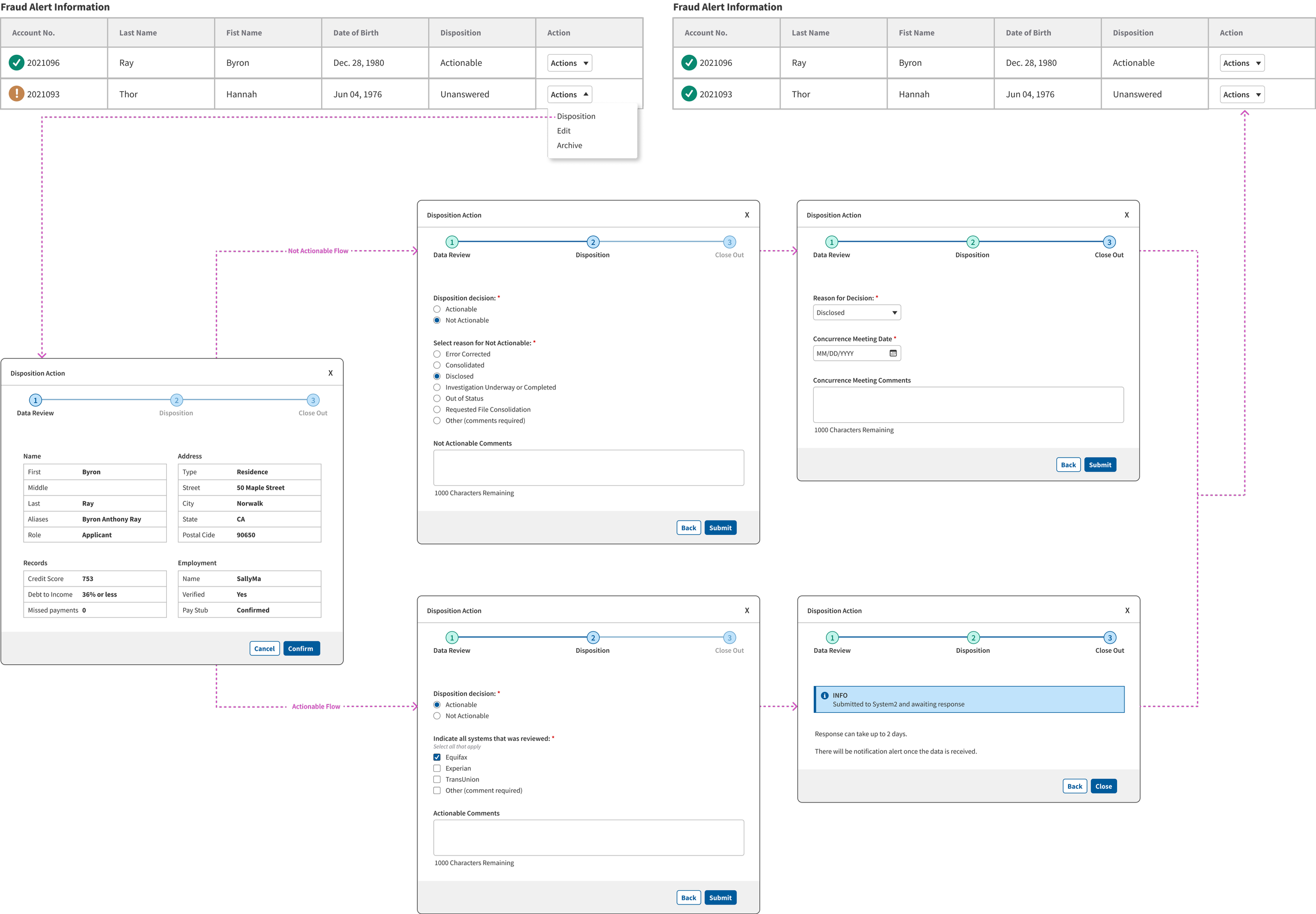Fraud Alert Detection System
Streamlining Credit Application Review
Overview
Led the UX team for a new fraud detection workflow within a credit company's internal system. The project aimed to replace manual, multi-system processes with an integrated, step-by-step disposition flow that would help accountants efficiently review credit applications and respond to fraud alerts.
NOTE: Project details have been modified to protect confidential business information.
Problem Statement
Credit application reviewers were experiencing significant inefficiencies in their fraud detection process. When applicants applied for credit, accountants had to manually check names across multiple disconnected systems—a process known internally as "swivel chair" work.
While the company had recently implemented a new fraud detection system capable of communicating with the existing intranet, there was no clear workflow to guide users through the disposition process. This resulted in:
Time-consuming manual cross-referencing between systems
Inconsistent review processes
Risk of missing critical fraud indicators
User confusion about process steps and decision points
My Role:
Lead UX Designer
Timeline:
4 weeks
Team:
3 UX Designers
1 Business Analyst
Development Team
2 Project Managers
Research & Discovery
Understanding the Current State
Mapped the existing process flow to understand how accountants currently handle fraud alerts. This revealed a complex ecosystem where users had to:
Receive fraud alerts from the new detection system
Cross-reference applicant information across multiple databases
Make disposition decisions without clear guidance
Navigate between two distinct workflow paths:
actionable alerts requiring investigation and
non-actionable alerts requiring acknowledgment
Stakeholder Collaboration
Working closely with the Business Analyst was crucial to this project's success. She had extensive domain knowledge and initial interface concepts, but we were able to identify opportunities to improve the user experience while achieving business objectives.
Through collaborative design sessions, I was able to demonstrate how alternative approaches could better serve both user needs and business requirements.
System Architecture Analysis
One of the biggest challenges was understanding how the various systems communicated with each other. A collaboration with the development team and Business Analyst to map out:
Data fields required to adjudicate
Technical constraints
Business rules governing different alert types
User decision points and their downstream effects
Design Process
Information Architecture
Created a comprehensive system map showing how different components would work together:
Alert Classification
Automatic routing based on fraud detection system output
Progressive Workflow
Step-by-step process that adapts based on alert type
Decision Trees
Clear paths for actionable vs. non-actionable scenarios
User Flow Design
The core challenge was designing for two distinct cognitive modes:
Investigation Flow: For actionable alerts requiring detailed analysis and likely leading to application denial
Verification Flow: For non-actionable alerts requiring acknowledgment before approval
Key Design Principles
Clear Progress Indication: Users needed to understand where they are in the process at all times, especially while waiting for data to be pulled from the other system.
Contextual Interface: The system would show only relevant information based on the action required.
System Integration: Seamless incorporation of fraud detection system data while maintaining familiar intranet patterns.
Error Prevention: Built-in safeguards to ensure critical steps weren't skipped in either workflow path.
Design Solution
Step-by-Step Disposition Process
Designed a stepper workflow for fraud detection, providing clear navigation through complex decision trees. The interface adapts based on action type and tapping in the notification alert to notify users when data is ready.
Integrated System Communication
The solution leverages the new fraud detection system's capabilities while maintaining consistency with existing intranet patterns. Data flows seamlessly between systems, eliminating the need for manual cross-referencing.
Progressive Disclosure
Rather than overwhelming users with all possible actions upfront, the interface reveals options progressively based on:
Mark as reviewed page
Alert classification (actionable/non-actionable)
Previous decisions made in the case
Adaptive Workflows
The interface intelligently routes users through appropriate processes:
Actionable alerts guide users through investigation steps with additional verification requirements
Non-actionable alerts streamline the acknowledgment process for faster case resolution
Stakeholder Feedback & Iteration
The Business Analyst's response was particularly validating. Despite having her own initial interface concept, she embraced the new design approach after seeing how it addressed user pain points while meeting business requirements. Her endorsement was crucial for gaining broader organizational buy-in.
The collaborative process demonstrated the value of challenging initial assumptions while maintaining strong working relationships with domain experts.
Results & Impact
The new fraud detection workflow transformed the credit application review process by:
Eliminating "swivel chair" inefficiencies through integrated system communication
Reducing cognitive load with clear process guidance and contextual interfaces
Improving decision consistency through standardized workflow steps
Decreasing processing time for both actionable and non-actionable items
Increasing user confidence in handling complex fraud scenarios
Key Takeaways
Systems Thinking
Complex integrations require a thorough understanding of data flows and business rules before designing interfaces.
Collaborative Influence
Sometimes the best solutions emerge from respectfully challenging stakeholder assumptions while staying open to their domain expertise.
User-Centered Business Logic
Effective enterprise software balances business requirements with cognitive ergonomics for the people using the system daily.
Progressive Disclosure
In complex workflows, revealing information and actions contextually prevents user overwhelm and reduces errors.




